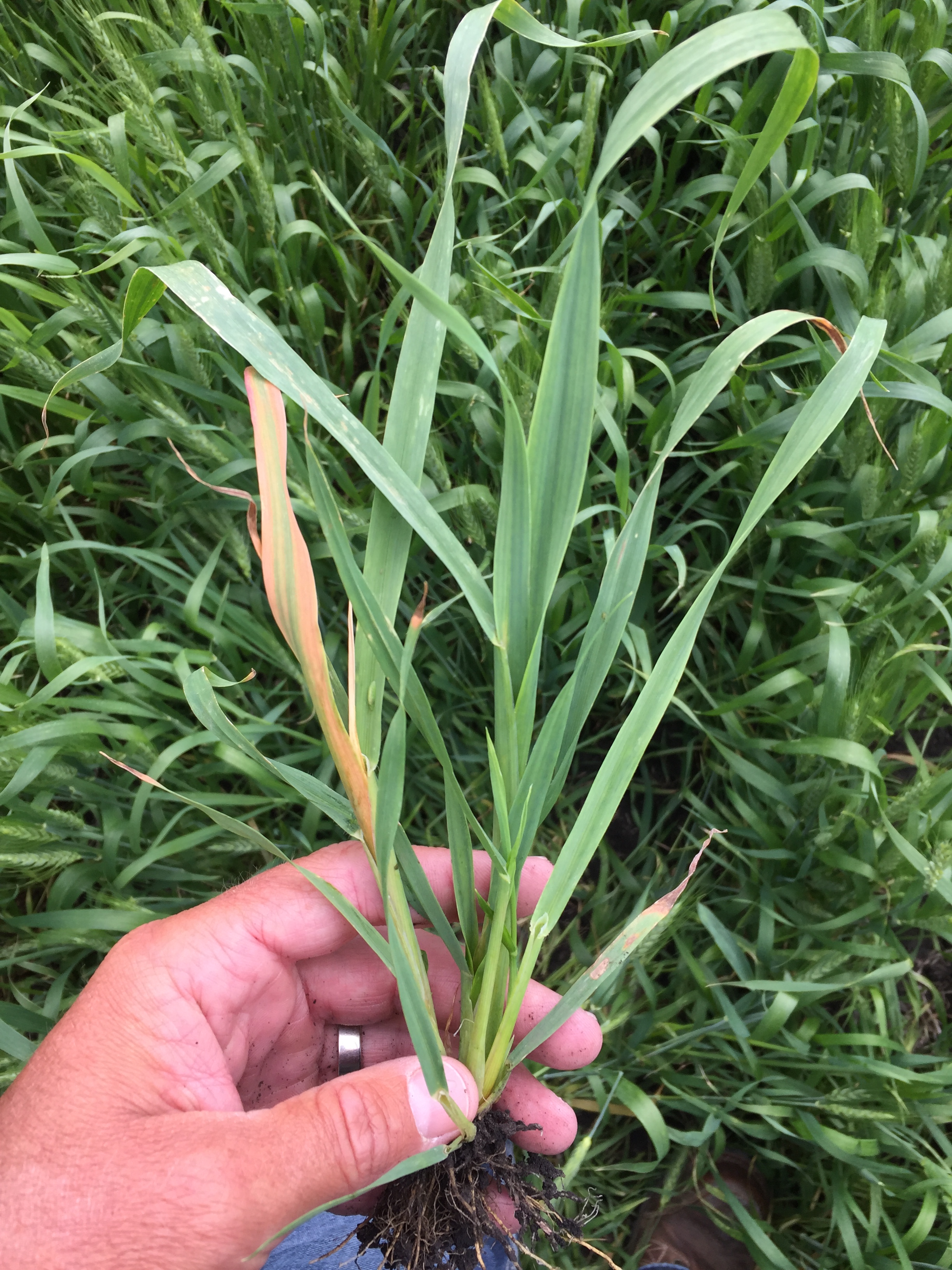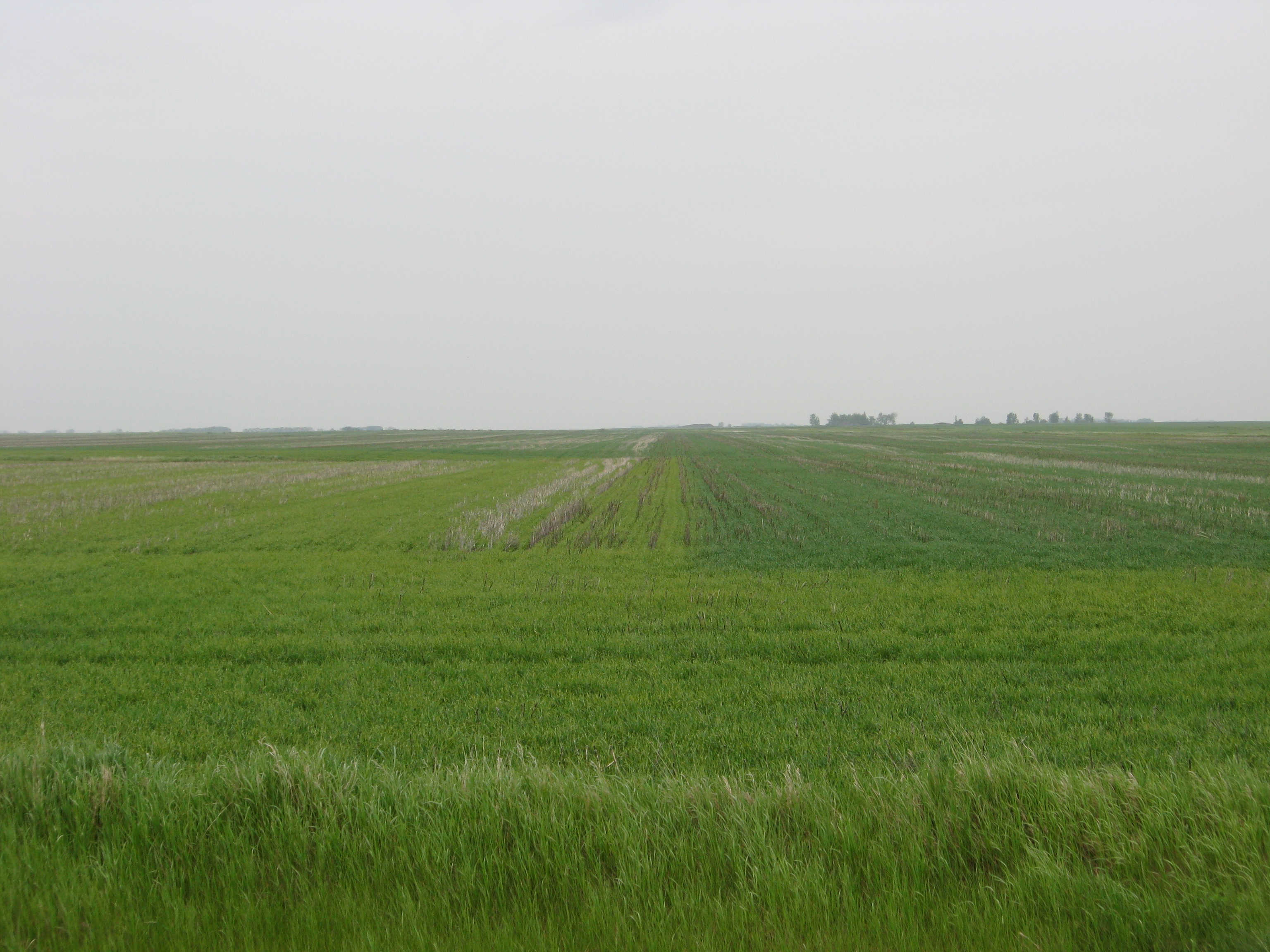Herbicide effectiveness can be reduced, and crop injury can occur under challenging weather conditions like drought, cold temperatures, heat, or heavy rain.
What happens to weeds and cereal crops in drought conditions?
The leaf cuticle (waxy layer on the leaf) thickens. Since most herbicides enter the plant through the cuticle, a thicker cuticle makes it difficult for the herbicide to get into the plant. With reduced herbicide uptake, a critical dose rate may never be reached, and weeds may not be controlled to a satisfactory level.
Drought also accelerates plant development. Although plants may not be as robust under drought conditions, they can move through growth stages quicker. Crop injury may be observed under drought conditions where the plants have grown beyond the safe/labelled growth stage. An example of this is Group 1 and 2 graminicides in cereals. Normally, these herbicides safely control grassy weeds in cereals because the crop can metabolize the herbicide while some grassy weeds cannot. For example, Varro® herbicide is safe on the crop up to the first node crop stage. When applications are made up to the first node stage, the crop can effectively metabolize the herbicide, while the weeds die. However, the crop slowly loses its ability to metabolize the herbicide at later growth stages.
Management recommendation: Check the crop stage prior to application to be certain that it has not grown beyond the safe growth stage for the herbicide. The most advanced stages can typically be found on eroded hilltops and south-facing slopes.
What happens to weeds and cereal crops in cold conditions?
Most selective cereal graminicides require translocation within the weeds to get to the target site where they cause plant death. For annual grass weeds (such as wild oats), if air temperatures fall below 3 to 4oC herbicide translocation slows or even stops. This may result in a sub-lethal dose rate reaching the target site, ultimately resulting in reduced weed control (Figure 1).
 Figure 1. Poor control of large wild oat in cool conditions.
Figure 1. Poor control of large wild oat in cool conditions.
For cereal crops, cold conditions may result in increased crop injury from Group 1 and Group 2 herbicides. In cold conditions (less than 3 to 4oC), natural plant enzymes responsible for metabolizing (breaking down) the herbicide shut down. Consequently, some active herbicide remains in the plant, causing crop injury.
Management tip: Apply selective cereal graminicides at least three days before or after a cold temperature event.
What happens to weeds and cereal crops following a frost event?
Low temperatures impact the weed and crop as discussed above. Additionally, frost can kill plants or portions of the plants. Leaves that are dead cannot take up herbicide. Herbicide uptake, and thereby effectiveness, may be reduced.
Management tip: Wait for new growth to appear before applying herbicides after a frost event.
Temperatures and risk of frost can vary by elevation within a small geographical area. Greatest risk of frost occurs in low lying areas under calm, clear conditions. Low relative humidity and dry conditions can also cause greater temperature fluctuation and frost risk.
What happens to weeds and cereal crops under heavy rainfall and/or anaerobic soil conditions?
Flooding can shut down plant growth causing similar results as in cold conditions. Herbicide may not reach the target site of the weeds at a high enough dose rate to cause plant death. Slow metabolism in the crop may also result in crop injury. Rainfall before the label rainfast interval can cause herbicides to wash off the plant, resulting in reduced weed control.
Management tip: Follow the recommended rainfast interval on the product label. Avoid applications to plants stressed by anaerobic/saturated soil conditions.
What happens to weeds and cereal crops in high heat?
Tank mixing herbicides with fertilizers, fungicides, and growth regulators increases the overall surfactant/solvent load in the spray mixture and may increase the rate of herbicide uptake. Under high temperatures (25oC or higher), this may cause crop injury through leaf burn or flashing.

 Figures 2 and 3. Yellowing and leaf burn of crop is caused by high solvent load tank-mix.
Figures 2 and 3. Yellowing and leaf burn of crop is caused by high solvent load tank-mix.
Management tip: Do not add fertilizers, fungicides, or growth regulators to the tank when spraying herbicides in high temperatures. Apply the herbicide according to the label direction.
Sources
Patzer, K. 2021. Interview March 5, 2021.
Sikkema, P., Robinson, D., Johnson, E. 2021. Weed Science Short Course. University of Guelph.
Legal Statements
ALWAYS READ AND FOLLOW PESTICIDE LABEL DIRECTIONS. Performance may vary from location to location and from year to year, as local growing, soil and weather conditions may vary. Growers should evaluate data from multiple locations and years whenever possible and should consider the impacts of these conditions on the grower’s fields.
Tank mixtures: The applicable labeling for each product must be in the possession of the user at the time of application. Follow applicable use instructions, including application rates, precautions and restrictions of each product used in the tank mixture. Bayer has not tested all tank mix product formulations for compatibility or performance other than specifically listed by brand name. Always predetermine the compatibility of tank mixtures by mixing small proportional quantities in advance. Varro® is a registered trademark of Bayer Group. Used under license. Bayer CropScience Inc. is a member of CropLife Canada. ©2021 Bayer Group. All rights reserved. 4029_S1_CA